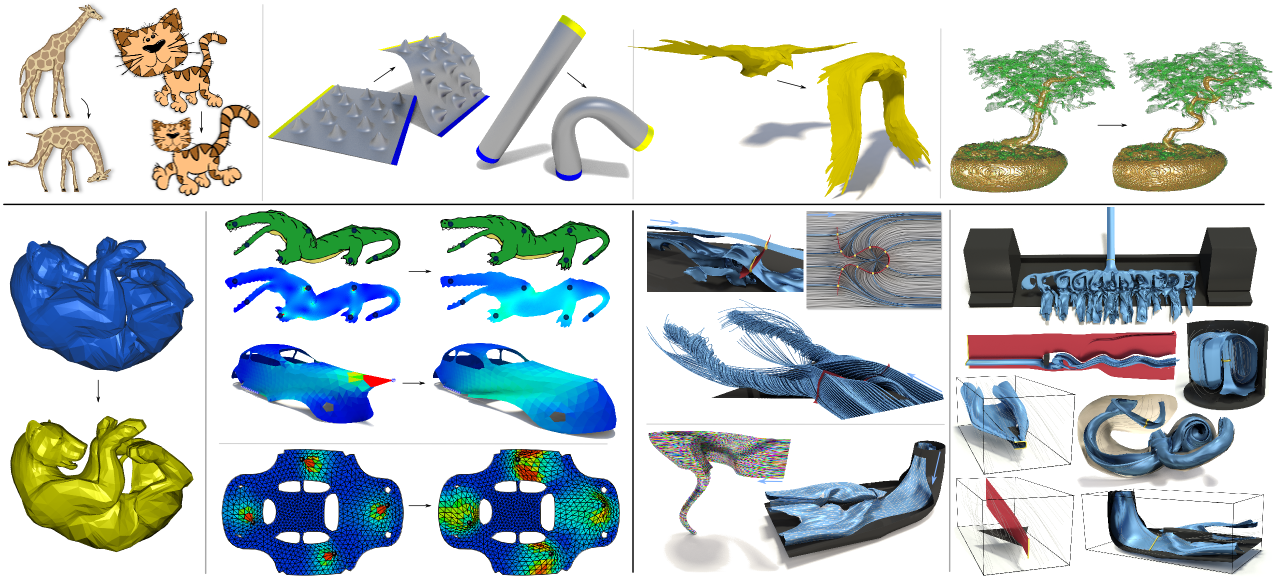Shapes in Vector Fields
Martinez Esturo, J.

Abstract
Geometric shapes are the basic building blocks of any graphics
related application. The effective manipulation of shapes is therefore of
central interest for many relevant problems. In particular, there is a growing
demand for high-quality nonlinear deformations for shape modeling and animation.
The application of vector fields that guide a continuous deformation is a
practical approach for their computation. It turns out that typically
challenging nonlinear problems can be solved in an elegant way using such vector
field-based methodologies. This thesis presents novel approaches and prospects
for vector field-based manipulation of geometric shapes (Part I). Thereafter,
also the definition of geometric shapes by means of vector fields is examined
(Part II).
Depending on the specific shape representation and the concrete modeling
problem, different types of vector fields are required: a family of generalized
vector field energies is introduced that enables near-isometric, near-conformal,
as well as near-authalic continuous deformations of planar and volumetric
shapes. It is demonstrated how near-isometric surface and volume-preserving
isosurface deformations are computed by a similar framework. Furthermore, an
integration-based pose correction method is presented. Based on a generic energy
description that incorporates energy smoothness, a conceptual simple but
effective generalized energy regularization is proposed, which is not only
beneficial for continuous deformations but additionally enhances a variety of
related geometry processing methods.
In the second part of the thesis vector fields are not considered to represent
deformations anymore. Instead, they are interpreted as flow fields that define
characteristic shapes such as stream surfaces: a deformation-based approach for
interactive flow exploration and the extraction of flow-tangential and
flow-orthogonal surfaces is proposed. It is shown how an unified computational
framework yields parametrizations that are particularly useful for surface-based
flow illustrations. Finally, an automatic method for the selection of relevant
stream surfaces in complex flow data sets is presented that is based on a new
surface-based intrinsic quality measure. The usefulness of the newly developed
methods is shown by applying them to a number of different geometry processing
and visualization problems.
BibTeX
@phdthesis{MartinezEsturo2013c,
title = {Shapes in Vector Fields},
author = { {Martinez~Esturo}, J.},
school = {University of Magdeburg},
year = {2013}
}